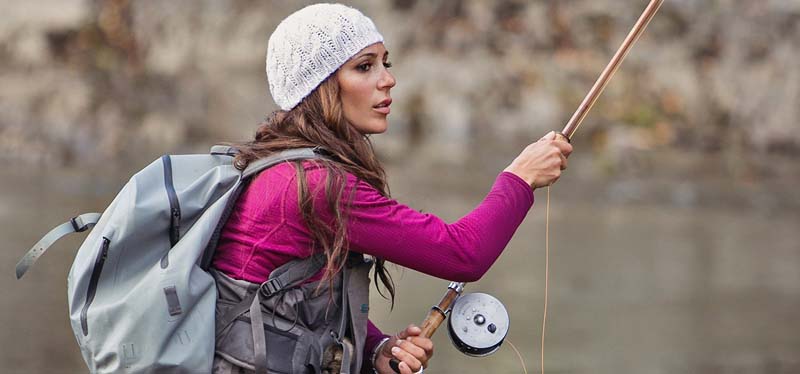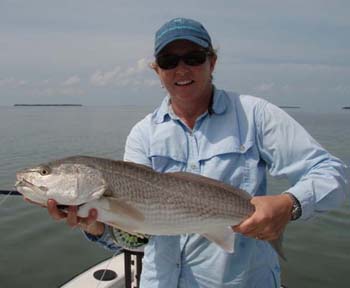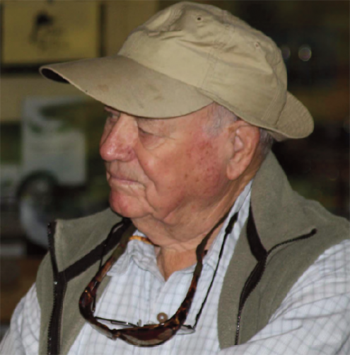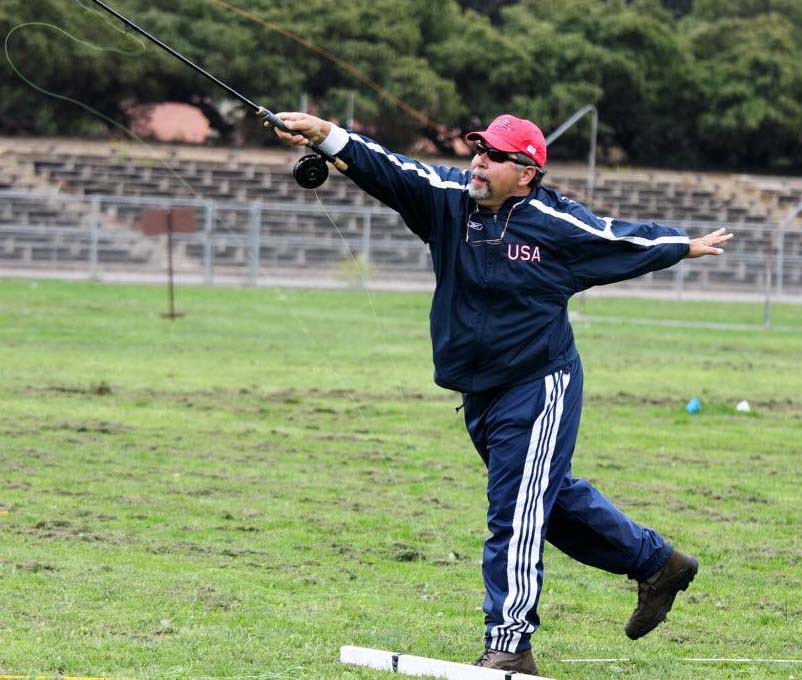
The “compleat” caster, professional guide and industry commentator, April Vokey. She is a master at all forms of casting – writes about it, speaks and teaches it. Image Patagonia.
By Skip Clement with Orvis “action” ratings
[dropcap]W[/dropcap]hat did or do famous fly casters like Maxine McCormack, Lefty Kreh, Diana Rudolph, Tom Rosenbauer, Joan Wulff, Steve Huff, Wanda Taylor, Pete Kutzer, April Vokey, Steve Rajeff, Cindy Russell, Joe Mahler, and Joe Brooks have in common with you and me? They didn’t or don’t agree, they did or will change their minds, and they did or will get better.
How’s that, you say?
Fly rods are like cars, golf clubs, and wines. What you like and I like are not always the same – sometimes never the same. Too, what you wanted a decade ago probably won’t be your what your preference is today. And when it comes to casting, we all certainly get better.
Fly rod choices are definable – in a limited way and not exactly like wines, beers or cars, but defining action helps a great deal. Orvis put it best. NOTE: I apologize for not recalling where the following first appeared, but the credit would nonetheless belong to Orvis and no doubt that the ubiquitous Tom Rosenbauer had a hand in the “declaration” signing.

Everglades National Park – Cindy Russell’s favorite haunt – getting ready for a release of a typical red. Cindy is always guided by her husband, Capt. Dave Hunt (Hunt The Flats), an ORVIS endorsed guide and one of my favorite go to guides. Russell is a superb caster.
Which Action Is Best For A Fly Rod: Fast, Medium Or Slow?
Fly fishing is all about selection, from the right fly to tie onto your leader to the right place to cast it. When it comes to your rod, you need to select an action. Deciding which one is right for you is one of the most important decisions, and personal, decisions you’ll make about your fishing gear.
Fly rods come all sorts sizes, variations, and styles. Picking which one to go with is not easy. While one rod is not necessarily the absolute very best, there are times and places where every rod shines.
What is “action”?
When fly fisherman talk about rod’s action, they’re referring to its flex pattern, stiffness, and ability to stop moving, or “recover,” at the end of a cast.
There are three basic types of actions: Fast, medium and slow. Rods flex in ways that can be categorized these ways because of the materials used to make them and how they’re built. Regardless of a rod’s length or line rating, it can flex near the tip, towards in its middle, or throughout their entire length. These differences have a significant effect on how a rod feels and performs.

The man who taught a thousand to fly fish will be missed, Lefty Kreh. Photo Skip Clement.
Fast action fly rods
• Sometimes referred to as “tip action” or “fast tip” rods
• Typically made from graphite or a boron/graphite mix
• Flex mostly at the tip, while the rest of the rod flexes little, if at all
• Tend to be stiff and powerful near the butt/handle section and most of the length of the rod
• Give you the power to fight big, strong fish
• Very difficult for beginners to cast because the rod’s action does not absorb mistakes
• Great for saltwater anglers or anyone needing to punch casts through breezes and heavy gusts
Medium action fly rods
• Typically made of graphite or fiberglass
• Bend from the tip to about a quarter of the distance down the rod
• Offers the best combination of performance and versatility
• Can feel like fast action, but with more flexibility to help you cast for, and fight smaller fish.
• Best suited to trout anglers who want one rod to do it all: From presenting dries and swimming streamers to dipping nymphs

In 2016, Maxine McCormick, 12 years old, became the number one U. S. fly caster for accuracy at the U.S. Casting Championships in Kentucky. She outscored legendary world champion Steve Rajeff. It was like you beating Lebron James one-on-one. Photo: San Francisco Chronicle.
Slow action fly rods
• Typically made from fiberglass and bamboo
• Bend from the tip to up to three-quarters the length of the rod
• Perfect for close casts and delicate presentations with dry flies
• While they’re a pleasure to cast short distances, they struggle at long ranges
• The choice of many anglers who fish small streams
Choosing one action over another
Like the car you drive or the beer you drink, fly-rod action is a personal choice. While a medium-action rod will work for almost all kinds of trout and bass, they don’t work for all types fisherman.
Say you’re a traditionalist kind of trout angler. You like small streams, close-in fishing, and dry flies. Most of your casts are short, and most of the fish you catch are on the smaller side. For you, a slow-action bamboo or fiberglass rod may be perfect.
Or maybe you’re the kind of guy who lives for bonefish. These cruisers are strong, and when hooked, they can move. When you fish for them, you toss big flies—usually into a good breeze. And when you hook up, you need a lot of backbone to turn a running bonefish around and bring him home. All this means you should lean towards fast-action rods with a stiff butt section and flex patterns that puts most of the bend in the tip.
Some steelhead anglers prefer huge, slow-action bamboo Spey rods over the fast tips of more appropriate graphite models. Why? Because they find slower rods more pleasurable to use.

Steve Huff has spent the last 40 years poling South Florida waters and becoming the most well-respected guide in the history of flats fishing. IGFA image. Huff still teaches fly casting at Sandy Moret’s world famous Fly Fishing School.
Shop a lot. Cast a lot. Be patient.
The only way to figure out the what type of rod works for you is to cast as many different models as possible. To do this, travel to different shops and check out different brands. Ask friends if you can cast their rods (or spend a few days with the rods on a local stream or river).
The more time you spend casting a wide variety of rods, the more you can narrow down that “sweet spot” where your casting stroke, the type of fishing you do, and a rod’s action all line up in perfect harmony.
However, if you’re like most anglers, the more you try different rods, the more you’ll see the advantages of various models and designs. Then you’ll start thinking you need to more than just one and find that owning a wide variety of rods sizes and actions makes your fishing more fun. For example, a small stream fiberglass 2wt for creeks, a slow action, 11’, 4wt for European nymphing, a medium action, all around 5wt trout set up, and a fast action, 7wt for streamer fishing may be a nice quiver to own if that’s the type of fishing you like to do.
Shop for an Orvis fly rod here . . .
Featured Image is world chamption fly caster Steve Rajeff makeing a one-hand rod cast during the 2008 national competition in San Francisco. Rajeff holds the event record at 243 feet. Photo G.Loomis Rods.


